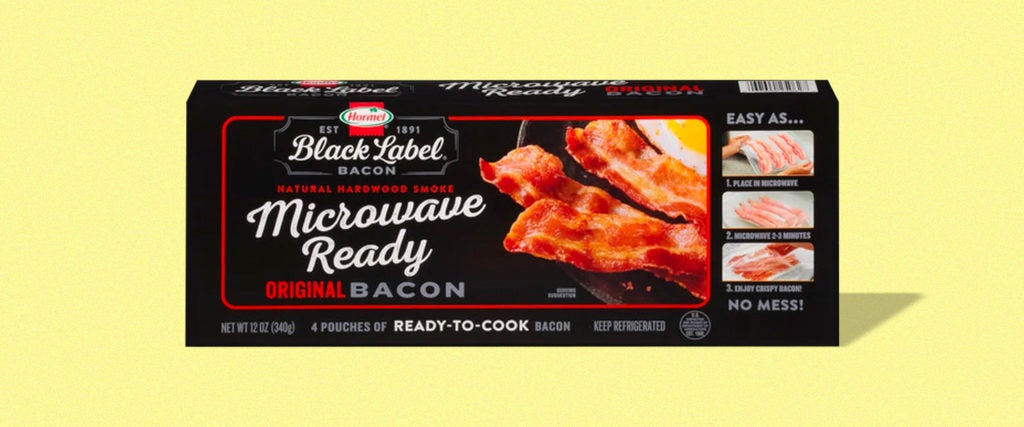Your suspicions over whether or not microwavable bacon is fishier than it is porky are justifiable. Given the number of ways in which questionable food offerings have been seemingly engineered out of thin air for the sake of catering to market segments we never knew existed, I can understand why you’d think there’s something mysterious about the microwavable meat that might be covertly masquerading as bacon.
Yeah! What’s the deal with microwavable bacon? Where does it even come from?
In 1985, Geo. A. Hormel & Co. and 3M set out to conquer the science behind preparing bacon in a microwave. In the summer of 1988, the product of this collaboration finally hit the market as Hormel’s Microwave-Ready Bacon. The value proposition of this new bacon offering stated that it “eliminates the need for special microwave cooking utensils and paper towels while ensuring crisp bacon.”
Cooking utensils and paper towels?
Yes, there have been plenty of specialty racks invented over the years to assist home chefs with the art of preparing bacon for the kitchen table by way of the microwave. As far as the paper towels are concerned, they have an established history as the disposable, go-to tool for combating the greasy splatters associated with bacon preparation, which also includes the cooking of bacon in a microwave.
So how does microwavable bacon make things easier?
Essentially, 3M developed a new material that pulled the grease away from the bacon as it was being nuked (broiled, actually) in the microwave, while still preserving its moisture. Each box contained four miniature, microwave-safe packages that each held four strips of bacon.
Okay, but there’s something funny going on with the bacon that makes it microwaveable, right? It has to be some sort of Franken-bacon, or Bacon-stein.
Actually, the first bacon used in the microwaveable containers was Hormel’s original Black Label brand bacon. It’s really just run-of-the-mill bacon, straight from the hog’s belly to your mouth, with a little bit of stabbing, processing and microwaving thrown in during the intervening production stages.
Wow, I thought there was some sort of crime against nature being committed here.
The only crime going on here was a crime against our wallets. In a summer 1988 edition of The Wilmington News in Delaware, it was explained how Hormel’s three-year investment into microwavable bacon science was based on a gamble that consumers would be willing to spend 17 cents per slice for bacon that would ordinarily cost them 10 cents per slice. In other words, the company was betting that consumers were so fed up with having to place their own bacon between paper towels and shove it through the door of a microwave that they’d be willing to pay a 70 percent premium just to have their bacon preselected, prearranged and laid out on fancy 3M cooking material.
Now, if you want to talk about crimes against nature involving a microwave as the weapon of choice, let’s round up the monsters who microwave perfectly good steaks.

